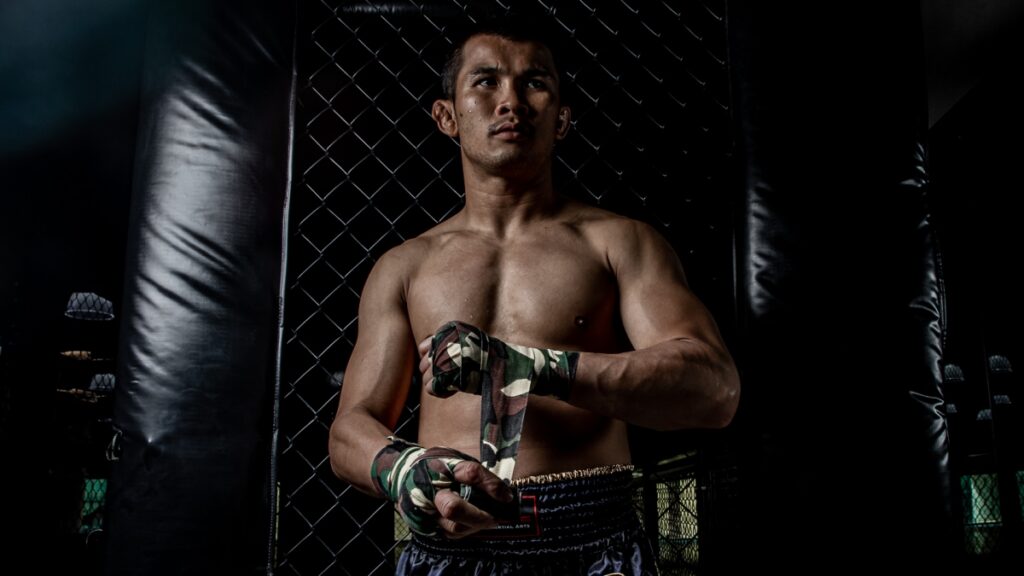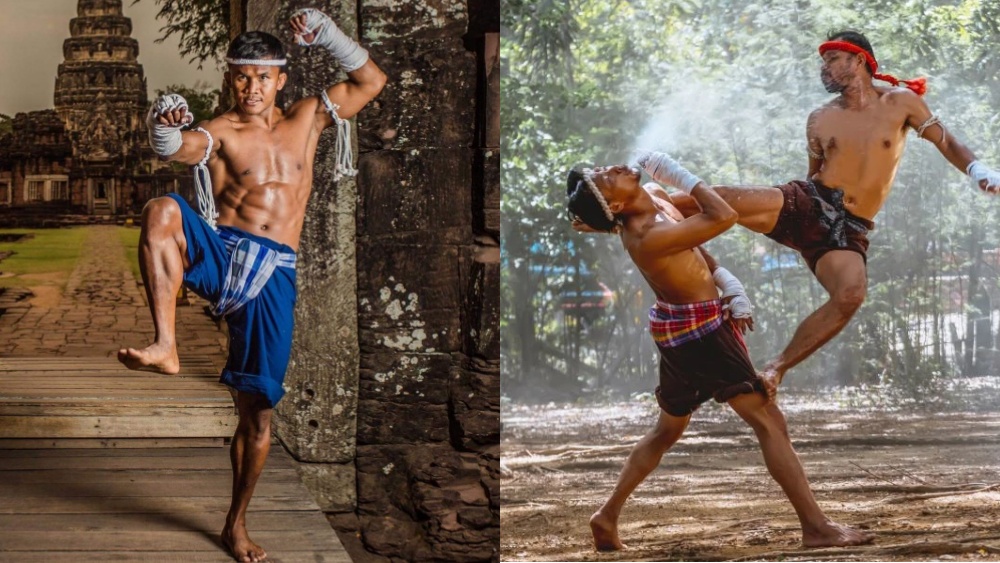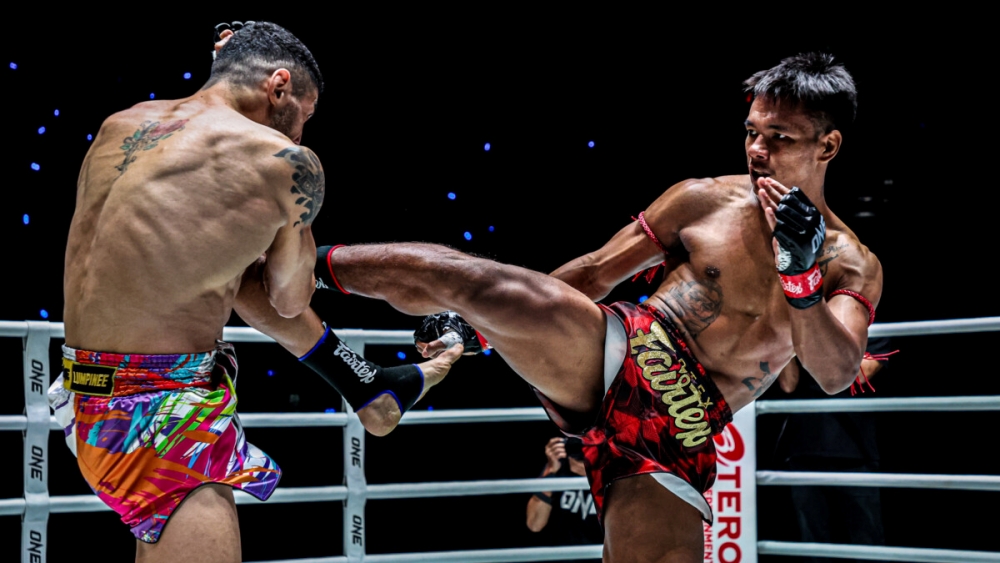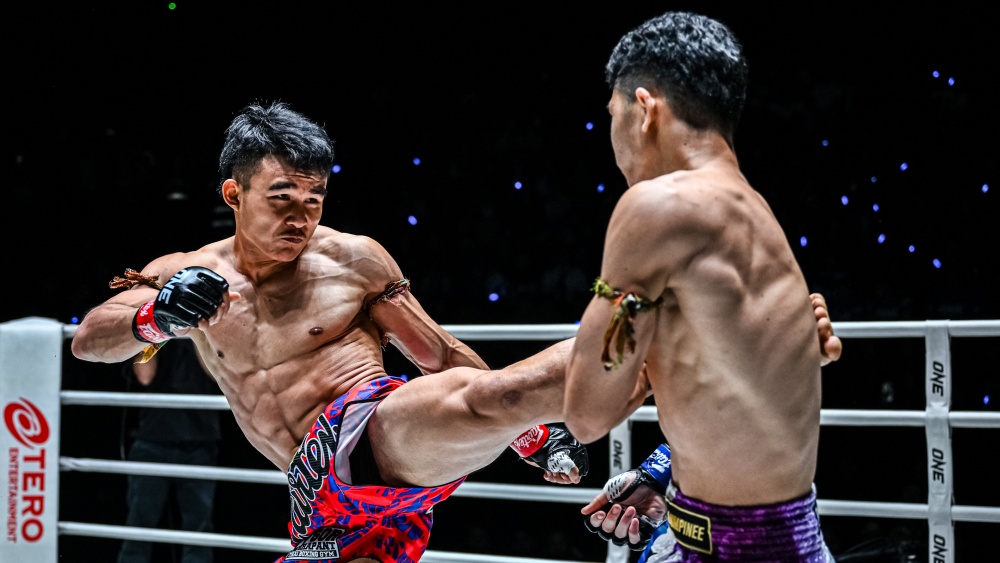Also known as the art of eight limbs, Muay Thai has emerged as arguably the most effective striking-based martial art on the planet. It’s certainly the most complete striking system, using your knees, shins, elbows, and fists as weapons.
Muay Thai also incorporates more grappling techniques than other striking arts. Despite the use of knees and elbows, which are typically not used in other striking arts, Muay Thai fighters are mostly feared for the devasting attacks and trips they can execute from clinch positions.
Boxing isn’t the most complete striking art since it restricts you to only using your fists as weapons. It is the most popular martial art in the world and the billions of dollars it generates yearly allows coaches and fighters to fine-tune it down to an exact science. Nothing compares to boxing when it comes to teaching students the importance of footwork, proper distance management, and the utilization of angles to place yourself in a position where you can attack an opponent without putting yourself at much risk.
Learn boxing or Muay Thai, and you’ll be a force to be reckoned with when it comes to the striking aspect of combat. Both are effective as self-defense systems as well.
Wrapping your hands for boxing or Muay Thai
In Muay Thai and boxing, properly wrapping your hands allows you to train optimally and it protects your hands when you throw power shots.
Try hitting a heavy bag without wrapped hands, and you will quickly realize how much stress is placed on your hands. Wrap up your hands, and punching a heavy bag becomes a completely different experience. Wraps allow you to punch harder for longer periods. The wraps provide padding and compression, protecting your hands.
Proper hand wrapping technique dictates focusing on padding the knuckles. Creating that extra padding gives your knuckles an additional level of protection when hitting pads or a heavy bag. It should be noted that hand wraps only provide half of the protection your hands need, while the gloves you use take care of the rest.
Small gloves should not be used for bag work since they only provide limited protection for your knuckles. Larger gloves combined with hand wraps provide your wrists with optimal protection when you train and spar.
We caught up with Muay Thai World Champion Penaek Sitnumnoi to learn how a multiple-time Muay Thai World Champion wraps his hands up. Here are the steps:
- Step 1: Roll your hand wraps inwards, just like they were in the packaging when you purchased them
- Step 2: Place the loop at the end of the wraps over your thumb
- Step 3: Wrap around your wrist four times
- Step 4: Wrap it around your thumb one time
- Step 5: Wrap around your wrist, going over the top of your hand and underneath your knuckles
- Step 6: Wrap around your knuckles three times
- Step 7: Wrap across the top of your hand and around your wrist
- Step 8: Wrap in between your pinky and ring finger
- Step 9: Wrap across the top of your hand and around your wrist
- Step 10: Wrap in between your ring finger and middle finger
- Step 11: Wrap across the top of your hand and under your wrist
- Step 12: Wrap in between your middle finger and index finger
- Step 13: Wrap across the top of your wrist and under your wrist
- Step 14: Wrap across your wrist with the remaining wrap, and you’re all set
Here are some additional tips that might help:
- Don’t wrap your hands too tight
- Don’t wrap your hands too loose
- Make sure the correct side of the wrap is facing down when wrapping
- Make sure you wrap your wrist as recommended to give them the proper support they need
The different types of hand wraps
There are three popular types of hand wraps used in combat sports. Cloth wraps are commonly used in Muay Thai and boxing when training. Elastic bandage wraps, and gauze and tape wraps are more often used during competitions. These provide more protection for the wrists, but they take more time to use.
It only takes about a minute for someone who uses cloth wraps regularly to wrap up their hands with them. Let’s take a closer look at the different types of hand wraps:
- Tape and gauze wraps: These offer a higher level of protection and are a staple of professional combat sports. It is also the lightest type of hand wrap available. It involves using gauze and athletic tape to wrap up the fighter’s hands. These types of wraps do have some downsides though. They take more time to apply than other types of wraps, and you typically need someone to do it for you. Tape and gauze wraps are not reusable.
- Cloth wraps: These are the most common type of hand wraps and they are typically used for training. They can be washed and reused, and they are designed to last for years. Cloth wraps also happen to be the most affordable type of wrap, costing no more than a tube of toothpaste.
- Elastic bandage wraps: These are similar to cloth wraps, but they stretch more to fit your hands. They are more breathable than cloth wraps, and they typically do not become loose during workouts.

















